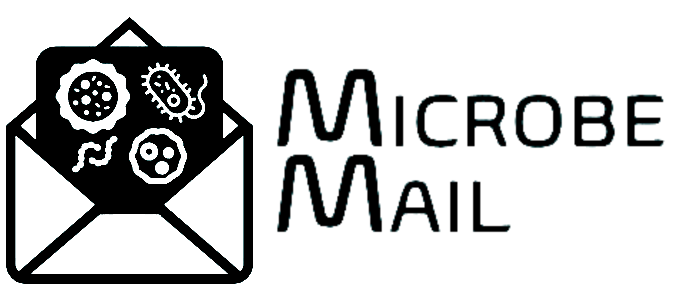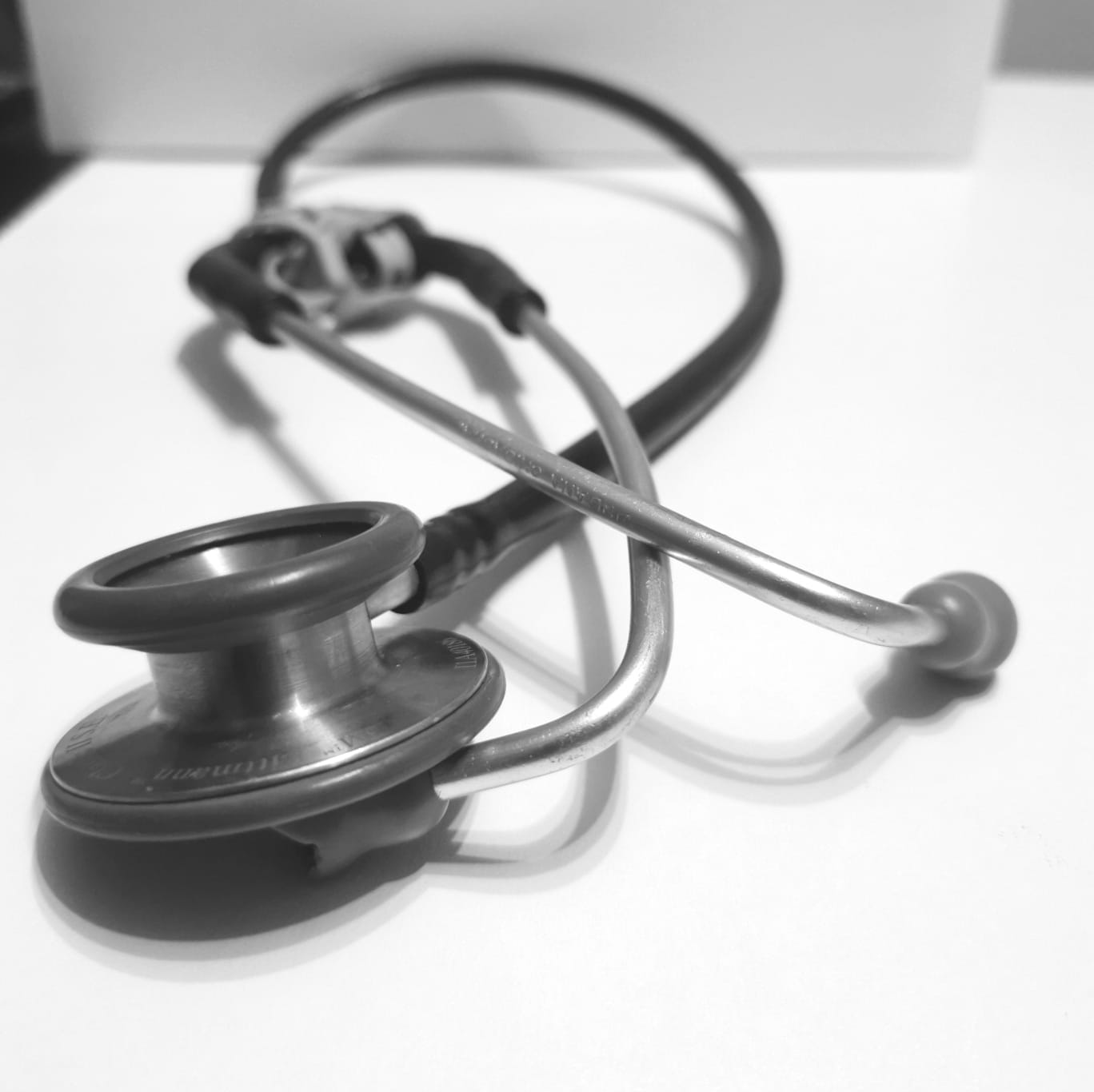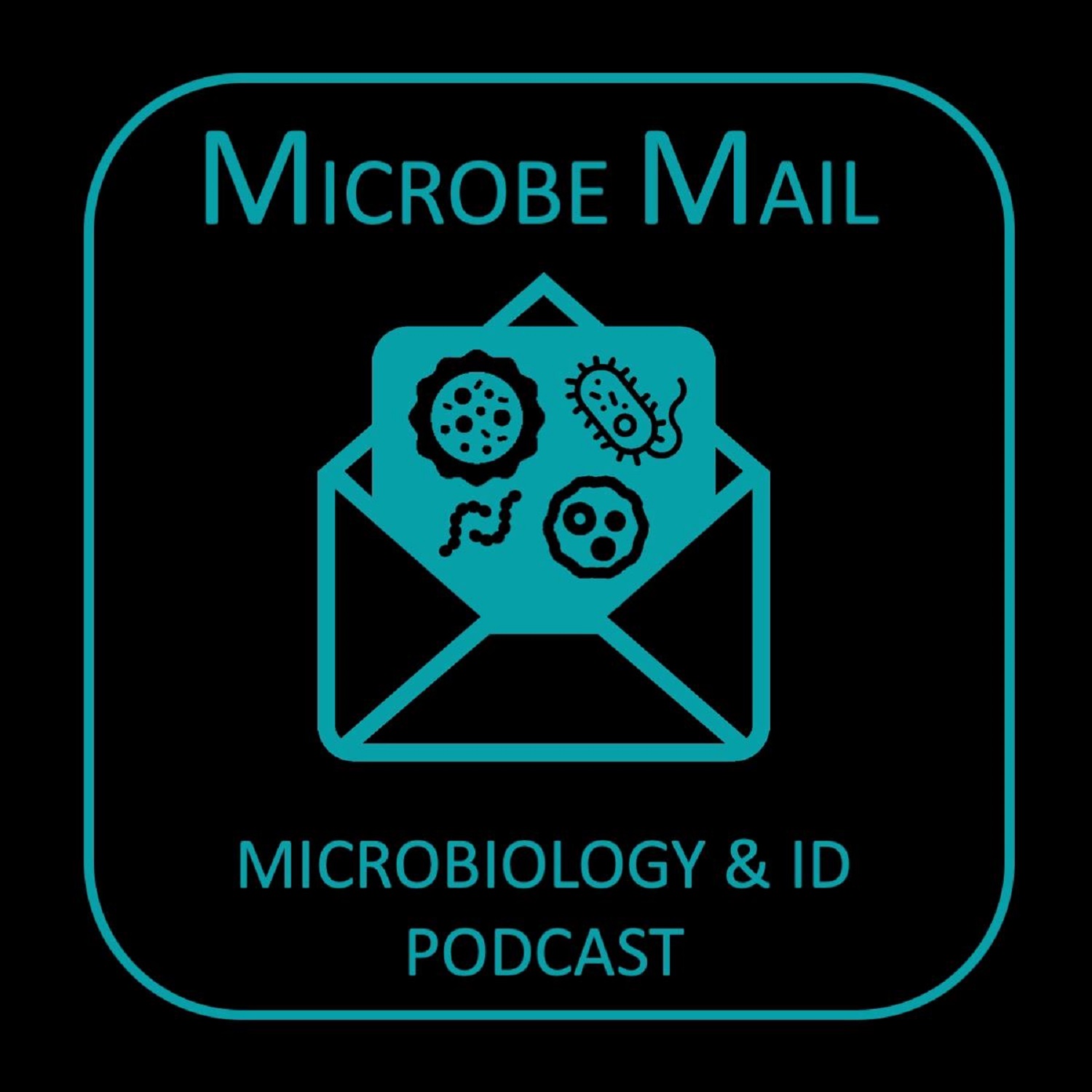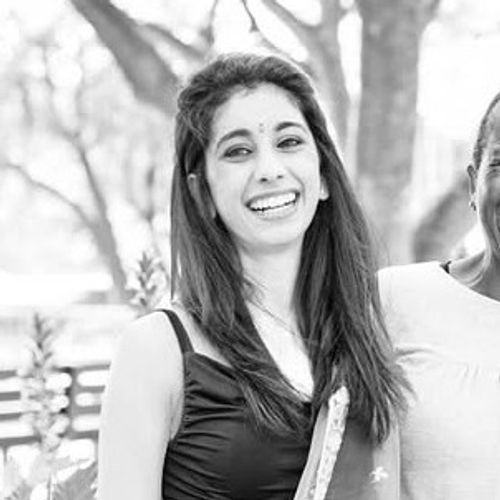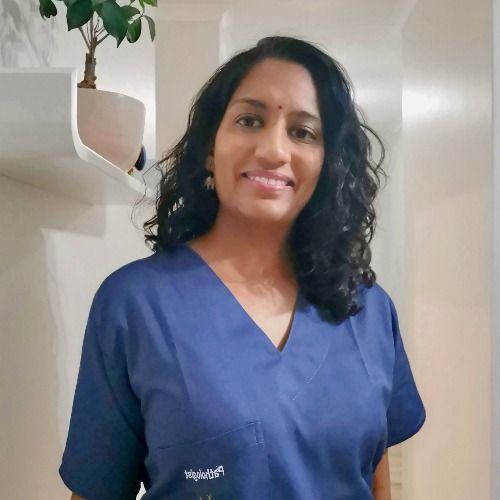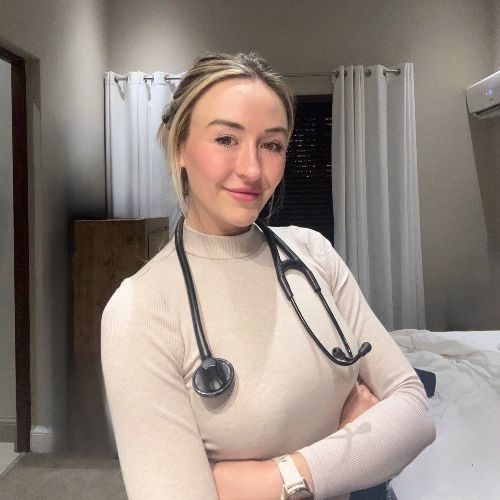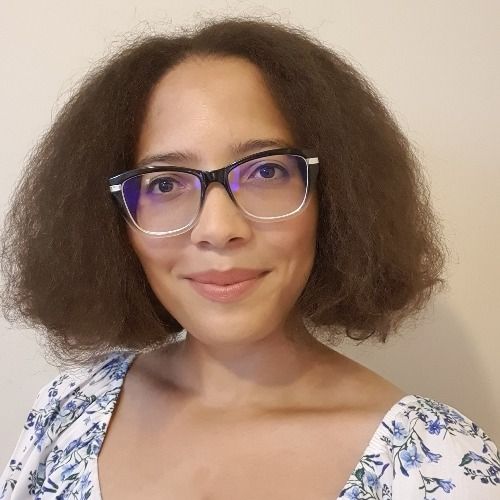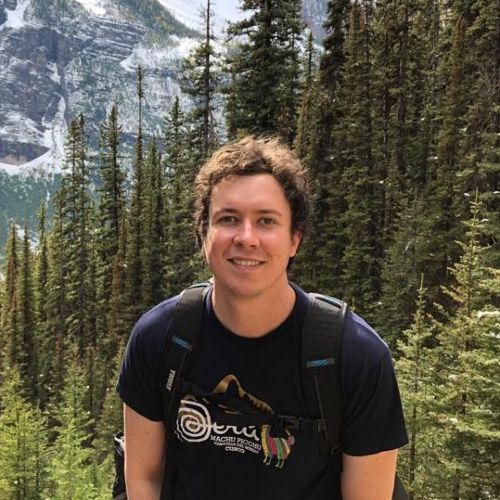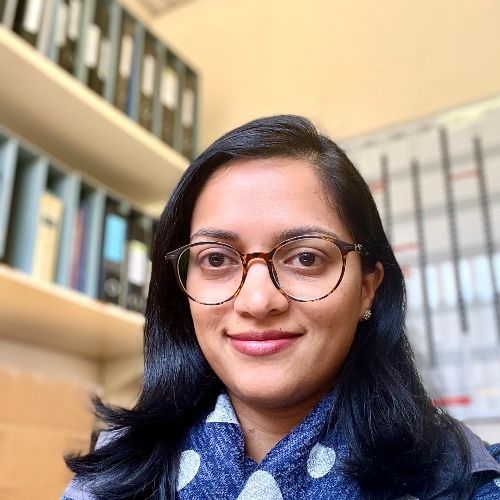Cracking the code
In this episode, we review how genomics is being used to fight against antimicrobial resistance (AMR). From outbreak tracking to detecting resistance genes, genomic tools are transforming how we understand, diagnose, and manage infectious threats.
About our Guest:
Professor Sabiha Essack is a seasoned researcher and a former Wellcome Trust Research Fellow who completed research towards her PhD in Pharmaceutical Microbiology at St Bartholomew’s and the Royal London School of Medicine and Dentistry in the United Kingdom. She currently serves as the South African Research Chair (SARChI) in Antibiotic Resistance and One Health and a Professor in Pharmaceutical Sciences at the University of KwaZulu-Natal (UKZN). View her inspiring and versatile biography HERE!
WE'D LOVE YOUR FEEDBACK ON THIS EPISODE –
Visit the Microbe Mail website to sign up for updates
Follow on:
Instagram: Microbe_Mail
X/Twitter: @microbemail
Facebook: MicrobeMail
Tiktok: @microbe.mail
Watch this episode on our new YouTube channel: Microbe Mail
E-mail us: mail.microbe@gmail.com
Transcript
stay tuned to find out how sequencing is shaping the future of infection control. This is Microbe Mail, and I am your host Vindana Chibabhai.
My guest today is Professor Sabiha Essack. Sabiha, it's so fantastic to finally have you on the show with us today. Please, can you tell the listeners a little bit about yourself?
Essack: Thank you, Vindana. [:So we look at AMR in humans, food animals in the main, as well as in the environment mostly, um, water and soil. And we do this by using metagenomics and whole genome sequencing and bioinformatics analysis. Um, I also serve on several, um, bodies internationally. I am on the WHO Strategic and Technical Advisory Group on antimicrobial resistance.
I serve on the, uh, advisory group to the Fleming Fund, as well as to CARB-X, which is a funder for the research and development of new therapeutics, diagnostics, and vaccines. It is a pleasure to be here, and thank you for inviting me.
Vindana Chibabhai: Ah, it's wonderful to have you. So, as usual listeners, we have a few reminders
before we head [:We love hearing from you and getting your feedback on any of our episodes. And also remember that we'd like for you to share Microbe Mail with your colleagues, students, and friends. Microbe Mail is always available anywhere in the world. So, Sabiha, I'm going to start off with a very general question, which I think some of our audience is already familiar with, but it's a good place to start off.
So can we talk about what antimicrobial resistance is and why it's considered a global threat?
stance occurs when bacteria, [:Imagine going back to the pre antibiotic era at a time where a simple cut or a bladder infection could be life threatening. That's the risk if we don't act.
Vindana Chibabhai: Yeah, that really sounds scary, you know, I mean, a urinary tract infection sounds like such an everyday thing. Um, and if we had to go to that pre antibiotic era, it would be quite scary.
I think in some ways we are almost there.
Sabiha Essack: Unfortunately, in some cases we are almost there.
dents, laboratory staff, and [:So, what is genomics? How does it work and why is there this general move globally towards using genomics for diagnostics and surveillance, et cetera?
Sabiha Essack: So, genomics is the study of an organism's entire set of DNA, it's genome. It helps us to understand what makes each organism functions, including how bacteria become resistant.
So, a genome would be, help us to identify antimicrobial resistance genes, the mobile genetic elements that carry these resistance genes that allow them to move from one bacterial species to the other, vertically within the same, uh, bacterial species, but also horizontally across different bacterial species. With faster and cheaper technology
athogens spread and how they [:Vindana Chibabhai: Hmm. So, what you're saying is that we just have so much more information with the whole genome than we've had with other methods that we've been using for the last a hundred years.
Sabiha Essack: Absolutely. It, it really gives you the full picture of the entire genomic makeup-
Vindana Chibabhai: mm-hmm.
Sabiha Essack: Of that particular bacteria. So, it's not just the antimicrobial resistance genes-
Vindana Chibabhai: mm-hmm.
Sabiha Essack: It's also the virulence genes; what makes them more or less pathogenic? Um, what family do they belong to? Are they as, are they, uh, causing a particular outbreak because we are seeing similar,
uh, strain types that are spreading within a particular hospital ward or hospital. And what is their ancestry? So, how do they compare with other isolates in the country or even internationally?
ing antimicrobial resistance?[:Sabiha Essack: So, genomics enables us to analyze bacterial DNA to determine which genes make them resistant to antibiotics.
Vindana Chibabhai: Mm-hmm.
Sabiha Essack: So, this helps us to understand how resistance develops, how it spreads between bacteria and how to stop it. It's like having a magnifying glass to what bacteria learn to outsmart our antimicrobial medicines.
So, basically we look at what genes are contained within the broader bacterial genome, and we have databases where we would be able to take the results from our whole genome sequencing or metagenomic sequencing and then compare them to these databases. And it's all done via bioinformatics analysis. And we get a, a report telling us that these are all of the genes that are,
designed, the bioinformatics [:Vindana Chibabhai: Mm-hmm. And it's incredible how fast it's moved, and as you said, it's become so easily available all over the world. So, I think you've already touched on a lot of it, but my next question was going to be how the field of genomics has invol, has evolved in relation to antimicrobial resistance over the last decade.
So, if you want to just elaborate on what you've already just said.
Sabiha Essack: Sure. So I, I just spoke, um, to some of my students to say that when I did sequencing-
Vindana Chibabhai: mm-hmm.
Sabiha Essack: We were sequencing, not the whole genome, but small PCR, uh, products. And I used to pour 48 centimeter plates with a special agar-
Vindana Chibabhai: mm-hmm.
and, and, and then put in a [:between 50 and a hundred, uh, PCR products, and I used to then watch it work overnight to detect a particular gene, which would then be manually sequenced in terms of the nucleotides that were present.
Vindana Chibabhai: Mm-hmm.
Sabiha Essack: So that was my PhD, and I won't say how long ago that was, but 10 years ago, sequencing a bacterial genome took weeks and was extremely costly.
Vindana Chibabhai: Mm-hmm.
Sabiha Essack: Now it can be done in hours at a fraction of the cost. And this has, this has been made possible, uh, to track AMR in real time, in outbreaks, in hospitals, and even in wastewater. Um, and, and wastewater based, uh, uh, detection of of AMR has really grown because we've piggybacked on the wastewater based surveillance of COVID, as well as the wastewater based surveillance of polio.
Vindana Chibabhai: Mm-hmm.
it of COVID was for us to be [:Vindana Chibabhai: Mm mm And much more detailed as well. Absolutely.
Sabiha Essack: Absolutely.
Vindana Chibabhai: So, you've given us some idea of what the techniques were that you used when you did your PhD, but can you tell us a little bit more about the genomic te- uh, techniques that are used currently to study AMR?
Sabiha Essack: Sure. So, so some of the techniques include whole genome sequencing, as I mentioned before, WGS.
Vindana Chibabhai: Mm-hmm.
Sabiha Essack: And this is the, this sort of reads the full DNA of a particular isolate.
Vindana Chibabhai: Mm-hmm.
at a sample. So it may be a [:And, and basically we extract the DNA from the sample and then we subject it to sequencing, it's called next Generation Sequencing.
Vindana Chibabhai: Mm-hmm.
Sabiha Essack: And this will identify all the microorganisms present in that sample, it can be viruses, it can be fungi, it can be bacteria or parasites, and we will get a full picture of that.
Then we have our, what we familiar with is polymerase chain Reaction and, and and QPCR, which is required to detect specific resistance genes.
Vindana Chibabhai: Mm-hmm.
Sabiha Essack: And then we have bioinformatics, which analyzes all of this genomic data, so, we analyze all of the data using software. We can delineate the resistome, which is all the resistance genes contained in the isolate or the sample.
lize them such that they can [:who were the ancestors and how they evolved over time.
Vindana Chibabhai: So, there's lots of techniques, and what it sounds like is that there's a lot of complexity to all of these techniques. I know it'll probably take you hours or days even to give us an overview of the various techniques, but would you be able to touch on some of them in the more important ones?
Sabiha Essack: So, so let's, let's think about whole genome sequencing. Um, and, and we think about this as, as, so, so the metaphor I use is like reading an entire book.
Vindana Chibabhai: Mm-hmm.
Sabiha Essack: So, every single word and letter, it describes all of the DNA contained in one isolate. So, metagenomics is like reading a library full of books, all at once.
search function to find one [:So, as I mentioned before, it was technically complex. It took a long time, but now it's, it's, we have all of these lovely extraction kits that we, we can suck up the DNA by using a few simple steps. We have to look at the quality of the DNA to, to make sure that it is of high quality, that it will sequence.
Then we, uh, fortunately have a good relationship with the, with the National Institute of Communicable Diseases, that has a huge, uh, sequencing platform consisting of long read and, and short read sequences and, and, and they do all of the wet lab aspects of it. We then get the raw data, uh, back to us, and then we use all of these software platforms to make sense of the data.
have certain platforms that [:What is available already is already captured. And then we then compare our results to that and it helps us identify whether we have similar uh, or novel, uh, mobile genetic elements or antimicrobial resistance genes.
Vindana Chibabhai: I love the analogy of the library and the book and the individual chapter or word that that, uh, puts it so succinctly.
I'm definitely gonna use that with students as well when I teach. So, I mean, we've spoken about detecting the antimicrobial resistance genes, but genomics can also be used for kind of future solutions to AMR. So, how can they help develop new antibiotics or new antimicrobial treatments?
Sabiha Essack: So, if we [:But, but genomics also helps us to identify new targets, um, in the bacteria that haven't yet been ex explored leading to novel, novel treatment. So, it's just sort of looking at what's in the genome and then looking at new targets that will cause the, have a bacteriostatic or a bactericidal effect. And, and the genomic information allows us to identify these targets, but also allows us to identify the resistance genes and sort of nullify them, um, by the development or the adaptation of existing antimicrobials.
Vindana Chibabhai: Right. Okay. And genomics can also inform strategies for managing antibiotic use in healthcare settings, how would that work?
empirical prescribing. It's, [:Vindana Chibabhai: Mm-hmm.
Sabiha Essack: But in with genomics, we know what we will have the full spectrum of all of the antimicrobial resistance genes that are present, whether they are expressed and can be phenotypically observed on an agar plate or whether they're silent. So, when we have antimicrobial resistance genes, not all of them are necessarily switched on-
Vindana Chibabhai: mm-hmm.
Sabiha Essack: At a particular time. What genomics tells us is everything that's there, the full resistome, whether the genes are switched on to show the resistance phenotypically on an agar plate or in a Vitek system, um, that we use commonly or not. So, um, it also helps hospitals detect outbreaks, as I've mentioned before.
Vindana Chibabhai: Mm-hmm.
Sabiha Essack: Isolate patients with drug resistant infections to prevent their spread. And we can also use this data to optimize our antibiotic stewardship programs.
t as part of the solution to [:So-
Sabiha Essack: absolutely.
Vindana Chibabhai: On that aspect of solutions, we know that surveillance for AMR is incredibly important. So, how can genomics be used, um, in surveillance systems for AMR?
Sabiha Essack: Genomics allows us to track resistant bacteria over time and space. It helps us to identify where resistance is spreading, whether in hospitals or communities, in animals or the environment.
And this is essential for public health officials to take the timely action. So, when we have surveillance, and surveillance can be phenotypic, so you it, it's a simple, as I mentioned before, the microbial culture and susceptibility testing, we have a panel of antibiotics, we use either disk diffusion or MIC's, and that tells us what, um, resistance profiles are.
e an increase or decrease in [:And there various genomic methods of of doing this as well. So again, we are looking at how much? How has it increased and decreased over time? And when we look at wastewater based surveillance, for example, wastewater based surveillance is a population based evaluation of antimicrobial resistance. And again, this is done mostly at the genomic level.
rmulary within the hospitals [:So, population based wa- wastewater based, uh, genomics also has a role to play, although not on a per patient basis. Um, it does still give us information to be able to, um, optimally use the existing antimicrobials.
Vindana Chibabhai: Hmm. That's a very interesting concept and as you say, it's building on previous wastewater surveillance for COVID-19 and um, poliovirus, measles, influenza.
So certainly it seems to be the way to be detecting, um, pathogens and resistance profiles.
Sabiha Essack: Okay, sorry to interrupt, but I wanted to say was that we are not starting a system of, of, um, wastewater based surveillance from scratch. We are actually building on existing surveillance. The infrastructure is there, the equipment is there, the laboratories are there.
All we saying is we now increasing our investigations to also include AMR.
utely. So, Sabiha, It sounds [:Sabiha Essack: So the, the, the common challenge to anything in, in, in, uh, in healthcare will be cost and infrastructure.
Vindana Chibabhai: Mm-hmm.
Sabiha Essack: So, sequencing machines and data analysis tools are expensive. They require maintenance, they need special infrastructure. Um, and, and so the, the labs in which they're based, as well as the cost of maintenance is, is quite considerable. Saying that it, the costs have declined incrementally over the years.
So, the second challenge is skilled personnel.
Vindana Chibabhai: Mm-hmm.
ca, and beyond. Then we have [:So, we really need to have data sharing, and then interpretation, right? So, we haven't really for, for the genomic aspects of AMR, the way in which we interpret the data is still being discussed quite a bit. So they, we have to interpret it correctly to inform the interventions.
Vindana Chibabhai: Mm-hmm.
Sabiha Essack: So, it's cost and infrastructure, skilled personnel, data sharing and interpretation challenges.
Vindana Chibabhai: Mm-hmm.
omes to studying AMR through [:Sabiha Essack: So, as with any kind of patient related data, there is, there are ethical concerns.
Vindana Chibabhai: Mm-hmm.
Sabiha Essack: Um, especially when the genomic data is linked to patient information.
Vindana Chibabhai: Mm-hmm.
Sabiha Essack: So, there are concerns about who owns the data, how it's stored, and how it's used. And we must ensure patient privacy is respected and that the data isn't misused as detailed in the, in the POPIA.
So the, the Protection of Personal Information Act, and I think that there is a healthcare component to this as well. As long as we, um, apply the POPIA act, the POPIA Act to the letter of the law, I think that we would be ensuring that there are no ethical contraventions.
Vindana Chibabhai: Absolutely. And then let's talk about South Africa specifically.
Where, where are we in terms of genomics and AMR, uh, compared to the more developed countries?
when we, when we identified [:We have a growing number of labs doing genomic surveillance. But we still face challenges, like limited funding, skills gaps, and uneven access across the country. We are on the map, but we are not where we need to be yet. And at the moment, genomics is a nice to have, not necessarily a have to have.
Vindana Chibabhai: Mm-hmm.
And so how, what do you think we should be doing to move forward, uh, considering the gaps that we face in South Africa?
Sabiha Essack: So if we link this to the challenges that I mentioned earlier-
Vindana Chibabhai: mm-hmm.
Sabiha Essack: First of all, we need more training. So, we need more bioinformaticians, more microbiologists, and more data scientists.
capable in the wet lab, uh, [:And then I'm sure you're aware that the GLASS methodology, mm, initially started up with simple microbial culture and susceptibility testing. It spoke about MIC's and disk diffusion testing, et cetera. But there is now a module that relates to the genomics of AMR as well, and in there They've identified the minimum infrastructural and other, uh, requirements that allows a country to also start, um, the genomic surveillance of AMR.
r of taking it as a country, [:Sabiha Essack: mm-hmm.
Vindana Chibabhai: Having these policies and collaborations in place to, to move forward. So Sabiha, any last words before we end our episode?
This was really fantastic. I love that you kept everything succinct, um, and understandable, but really covering all of the important aspects. Any last words for our listeners?
st to make reference that the:We have a political, a new political declaration of AMR that has really elevated it as a global public health concern. Um, part of the political declaration and the commitments in includes surveillance, genomic surveillance, as well as phenotypic surveillance because surveillance tells us the nature and extent of the AMR challenge in each country.
to mitigate AMR are working. [:um, when it comes to the mitigation and the interventions to, uh, address AMR.
Vindana Chibabhai: Thank you Sabiha. So that actually brings us to the end of this episode. It was, Sabiha, it was such a pleasure having you on the podcast. Um, really thank you for sharing your insightful contributions and I'm really sure that the audience is gonna find it really valuable.
Um, and we look forward to hearing their feedback. But we hope maybe we can get you to join us again on another episode in the future.
Sabiha Essack: Vindana, thank you very, very much for the opportunity. It was a pleasure to talk about AMR and yes, and I look forward to other opportunities. Thank you very much.
us feedback on this episode [:Also follow, like and share microbe mail from wherever you listening. And so until next time, that's it from me, Vin, and all of your microbe messengers. We'll see you again soon with more contagious mail.
